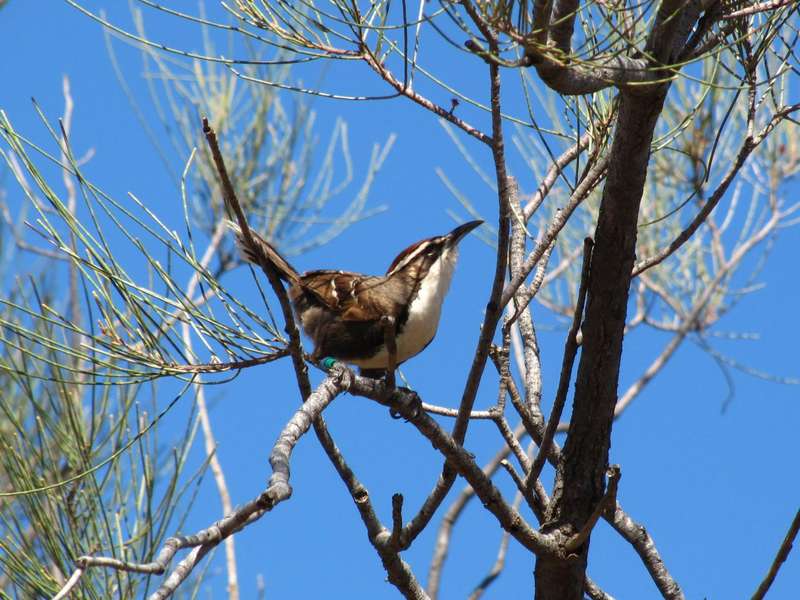Bird Babble Reveals Clues to Evolution of Language
 Humans are not the only ones who babble. Researchers have for the first time found that another species – the chestnut-crowned babbler bird – can arrange sounds in a meaningful way.
Humans are not the only ones who babble. Researchers have for the first time found that another species – the chestnut-crowned babbler bird – can arrange sounds in a meaningful way.
The findings could have implications for how the intricate language systems we use today first emerged. The bird makes two specific sounds, “A” and “B” and arranges them to indicate a flight call or a prompt for food, with the former comprised of “AB” and the latter, “BAB.”
“Although previous studies indicate that animals, particularly bids, are capable of stringing different sounds together as part of a complex song, these songs generally lack a specific meaning, and changing the arrangement of sounds within a song does not seem to alter its overall message,” lead author Sabrina Engesser from the University of Zurich in Switzerland said in a university press release.
“In contrast to most songbirds, chestnut-crowned babblers do not sing. Instead its extensive vocal repertoire is characterized by discrete calls made up of smaller acoustically distinct individual sounds.”
Part of the reason this species of birds is capable of this is because they are highly social, so they have a lot to say, comparatively, co-author Dr. Andy Russell, associate professor in animal behavior at the University of Exeter in England, told Bioscience Technology. “Combining existing sounds in new ways probably offers a faster solution to generating new information than evolving new sounds. By extension I would expect at least some other social species to also be capable, but they have not been studied in this regard.” The team suggests looking at short-distance contact calls of highly social species to look for new examples.
Babblers have at least 15 fully distinct calls and the team believes that three pairs probably contain element sharing and rearrangement, though experiments have not been done to confirm this.
Not only were the birds found to emit the different sounds in different context, but birds listening to the sound played back showed that they recognized the distinct calls. When they heard a feeding prompt call they looked at nests, and looked out for incoming birds when they heard a flight call.
It is the addition of the “B” that appears to differentiate between the two, the researchers said, comparing it to ‘cat’ and ‘at’ in the English language.
“This is the first time that the capacity to generate new meaning from rearranging meaningless elements has been shown to exist outside of humans,” co-author Dr. Simon Townsend from the University of Zurich said.
The research potentially gives hints to early-language evolution.
“One of the greatest challenges in understanding human language evolution is knowledge of its precursors, since today human language is far too developed to shed light on this important issue,” Russell told Bioscience Technology. “Animals offer one of the few insights. That we show a very basic way of generating new meaning from rearranging meaningless sounds, provides some insight into the evolution of how early word generation might have been achieved in our hominin ancestors.”




